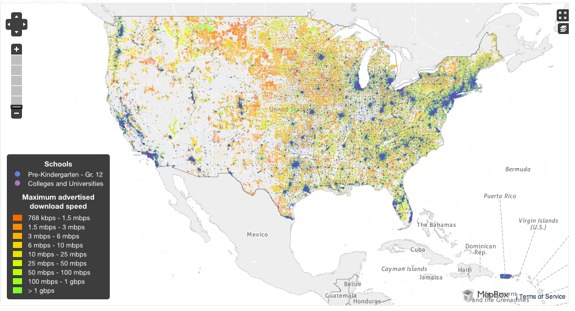Remember the agony of waiting for a Web site to load, before broadband was widely available? According to a recent survey, a lot of American schools and libraries are still living in that era.
Only 35% of public libraries have broadband speeds between 1.5 Mbps and 10 Mbps (a rather broad range); 34.7% have speeds lower than 1.5 Mbps, and only 24.9% have broadband speeds higher than 10 Mbps, according to data from the American Library Assocation's Public Library Funding & Technology Access Survey (PDF). As a comparison, Netflix says that an Internet connection of at least 1.5 Mbps is necessary to stream videos at the lowest possible quality.
But keeping up with the requisite Internet speed isn't the only challenge that schools and libraries face. With the increasing demands for data, there are also challenges of bandwidth. Multiple users on multiple machines -- whether accessing the Internet through hardwire or wireless -- put additional strains on resources, so that even if a library or school has high-speed broadband, a user experiences dial-up-like speeds.
The FCC has made broadband access the focus of some of its efforts over the last few years, arguing for its importance to the U.S. economy and education. It's pushing for better access across the board, but also recognizing the importance of high-speed Internet specifically at schools and libraries.
Universities tend to have better-than-average speeds, and the FCC is urging these schools to help extend these speeds to the communities around them. The agency also wants to make sure that access to broadband at school extends to the home.



